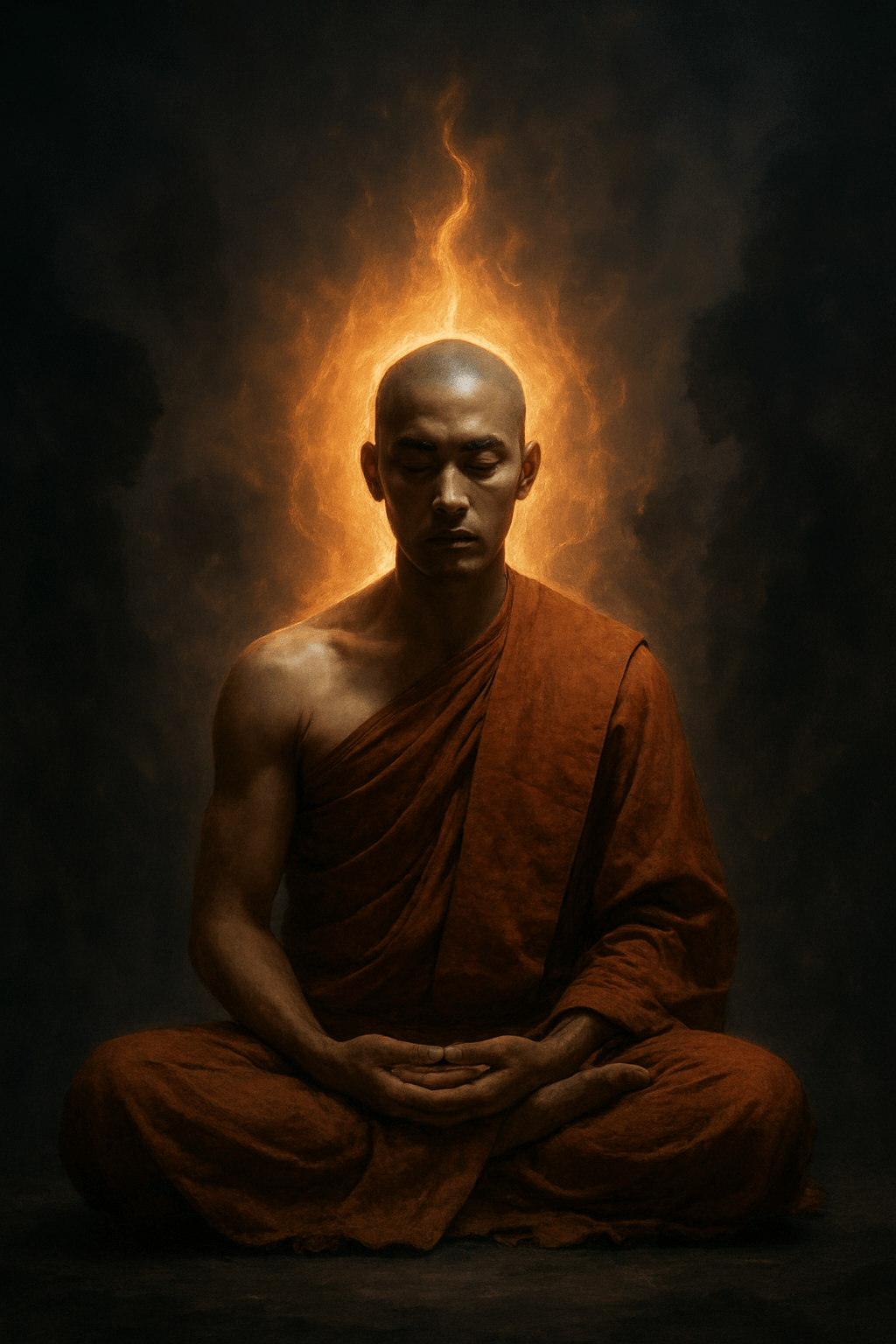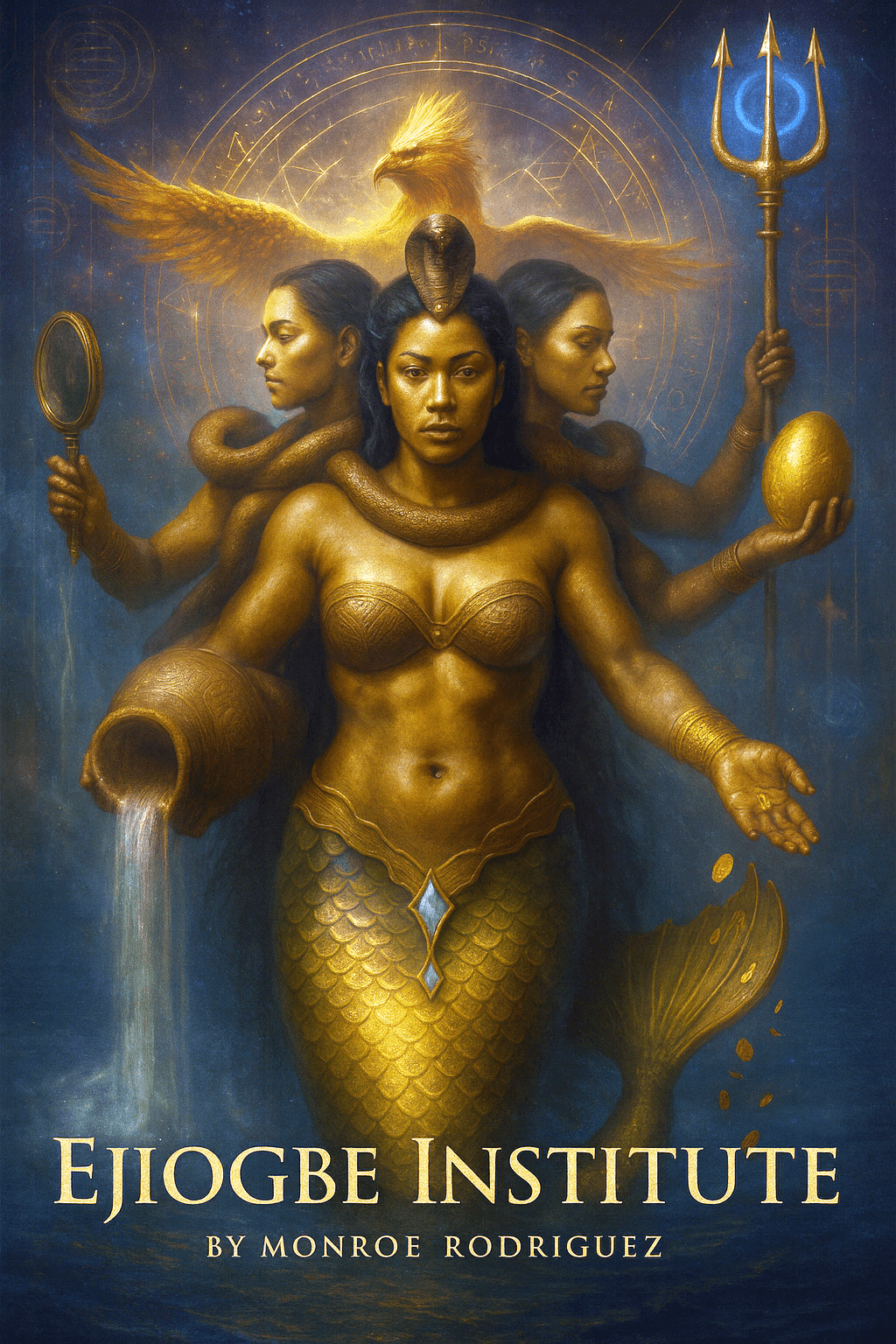
Discover how the Bhūta-Māra Tantra uses ferocity not as violence, but as spiritual clarity—a path to dissolve fear and integrate the shadow self.
Understanding the Bhūta-Māra Path
The Bhūta-Māra Tantra presents a powerful approach to spiritual transformation that confronts rather than avoids the forces that bind us. This ancient tantric tradition offers profound insights for anyone working with inner shadows, persistent fears, or psychological obstacles.
What Does Bhūta-Māra Mean?
- Bhūta refers to beings, elemental spirits, or unseen forces
- Māra translates as "that which destroys illusion" or "obstacle-remover"
Together, these terms describe a transformative practice where practitioners face the very forces that frighten or constrain them—not through destruction, but through conscious integration.
The Sacred Role of Ferocity in Consciousness Work
Ferocity as Clarity, Not Cruelty
In the Bhūta-Māra tradition, ferocity serves a specific spiritual purpose. This isn't anger or violence—it's unwavering focus and forceful clarity that cuts through illusion. Think of it as the sharp edge of consciousness that refuses to look away from what needs to be seen.
This fierce presence creates the container necessary for transformative encounters with:
- Inner demons and shadow aspects
- Persistent psychological patterns
- Unconscious fears that limit growth
- Elemental forces in tantric cosmology
Spirit-Subjugation: Beyond the Surface Meaning
What Really Happens in Subjugation Practice
The term "subjugation" misleads modern readers. The Bhūta-Māra approach doesn't aim to dominate or destroy. Instead, practitioners engage in a ritualized process that:
- Confronts the force or spirit directly through mantra and visualization
- Maintains steady presence without fleeing or fighting
- Reveals the false boundary between self and "other"
- Integrates what was perceived as separate or threatening
The "enemy" encountered—whether interpreted as an actual spirit or a psychological complex—gains power from being treated as alien. Through sustained practice, this separateness dissolves.
The Psychology of Otherness: Where Fear Lives
Why We Create Demons
Fear and hostility arise from perceiving "the other"—something fundamentally separate from ourselves that threatens our existence or identity. The Bhūta-Māra tradition recognizes this as the core illusion maintaining our suffering.
From a psychological lens: The demon represents rejected or repressed parts of the psyche that gain power through denial.
From a metaphysical lens: The duality of subject and object creates the illusion of separation where none truly exists.
When the illusion of distance dissolves through practice, the spirit loses its power to haunt. What remains is recognition—practitioner and force share common ground in consciousness itself.
Practical Applications for Modern Shadow Work
Adapting Bhūta-Māra Principles Today
Even without formal initiation into tantric practices, these principles offer valuable guidance for inner work:
1. Face What Unsettles YouStop fleeing from persistent fears, uncomfortable memories, or challenging patterns. Acknowledgment is the first step toward integration.
2. Establish Steady AuthorityCreate safe containers for this work through:
- Grounding meditation practices
- Therapeutic relationships
- Ritual or ceremony appropriate to your tradition
- Supportive community
Much of what we fear derives power from our belief in its separateness. Sustained, compassionate awareness reveals the artificial nature of this boundary.
4. Integrate Rather Than AnnihilateThe goal isn't destroying parts of yourself or declaring war on aspects of reality. True liberation comes through reconciliation and wholeness.
Working With Your Personal Māras
Identifying Your Own Spirit-Obstacles
Consider what plays the role of Māra in your life:
- Recurring anxieties that seem to have their own agenda
- Self-sabotaging patterns that feel autonomous
- Addictive behaviors operating outside conscious control
- Persistent negative self-talk that feels like an external voice
These aren't enemies to be destroyed but aspects of consciousness seeking integration.
The Importance of Lineage and Guidance
A Word of Caution for Practitioners
The Bhūta-Māra Tantra belongs to an esoteric tradition typically transmitted through:
- Direct teacher-student relationships
- Formal initiation ceremonies
- Years of preparatory practice
- Ethical and philosophical training
This article offers interpretive reflection for thoughtful exploration, not instruction in actual tantric ritual. Those drawn to this path should seek qualified teachers who hold authentic lineage transmission.
Approach these powerful practices with:
- Humility about what you don't know
- Respect for traditional guardians of the teachings
- Patience with your own process
- Professional support when working with deep psychological material
The Ultimate Dissolution: Non-Duality in Practice
The Bhūta-Māra path ultimately points toward the direct recognition that subject and object, self and other, practitioner and demon exist within a unified field of consciousness. This isn't merely philosophical—it's a lived realization that transforms how we relate to everything we once feared.
When ferocity meets with wisdom, and courage meets with compassion, the boundaries we've constructed begin to reveal themselves as arbitrary. What remains is the spacious awareness that was never truly threatened—the consciousness that witnesses both the demon and the one who trembles.
Key Takeaways
- The Bhūta-Māra Tantra uses ferocity as clarity, not violence
- "Subjugation" really means revealing false boundaries
- Fear gains power from perceiving "otherness"
- Modern shadow work can adapt these ancient principles
- Authentic practice requires proper guidance and humility
Ready to explore your own inner landscape? Consider how the principles of fierce compassion and boundary-dissolution might illuminate your spiritual path—always with appropriate support and respect for these powerful traditions.
